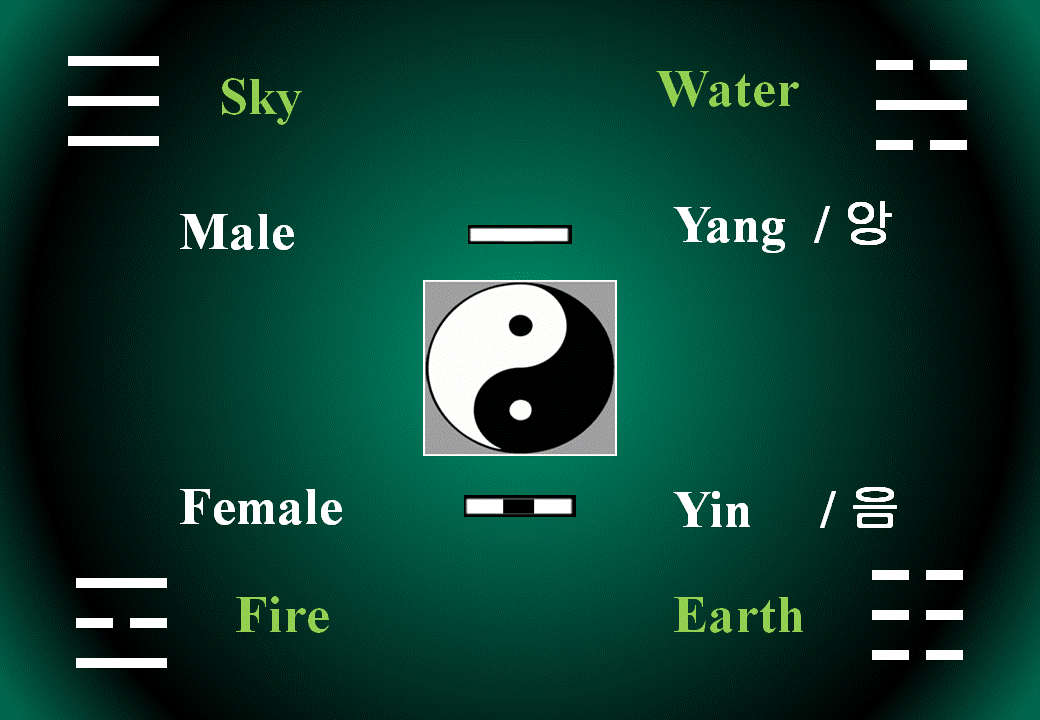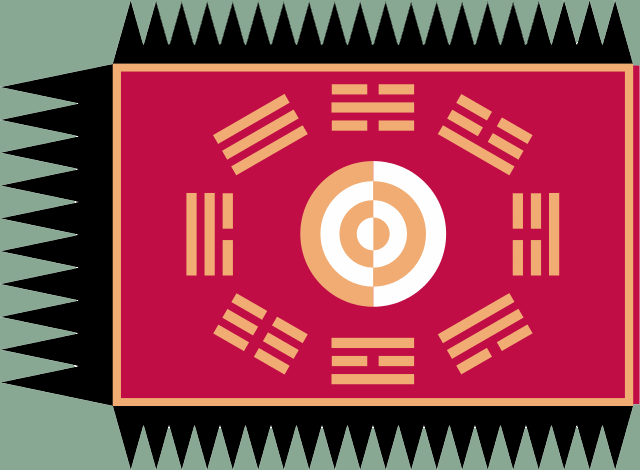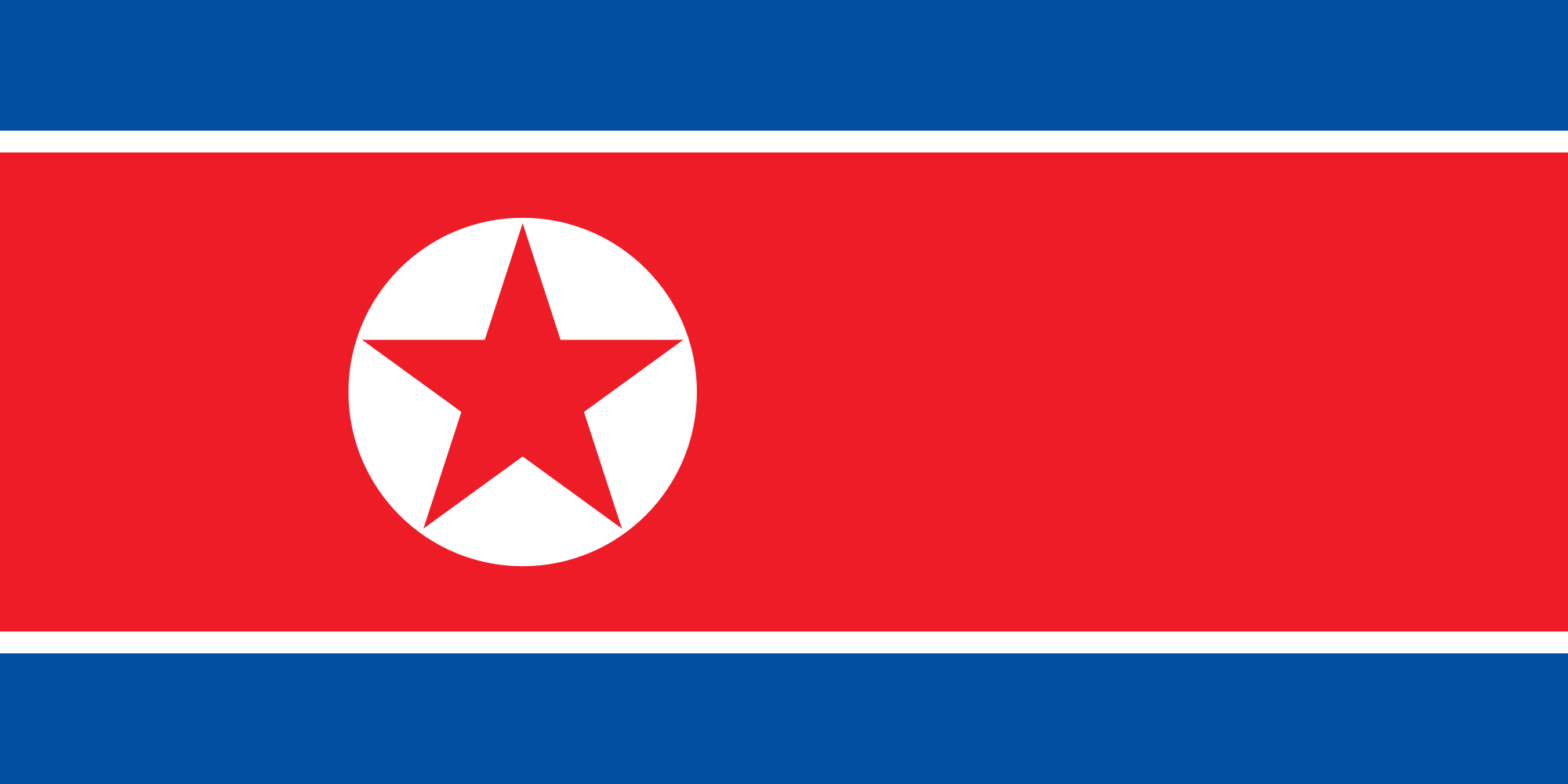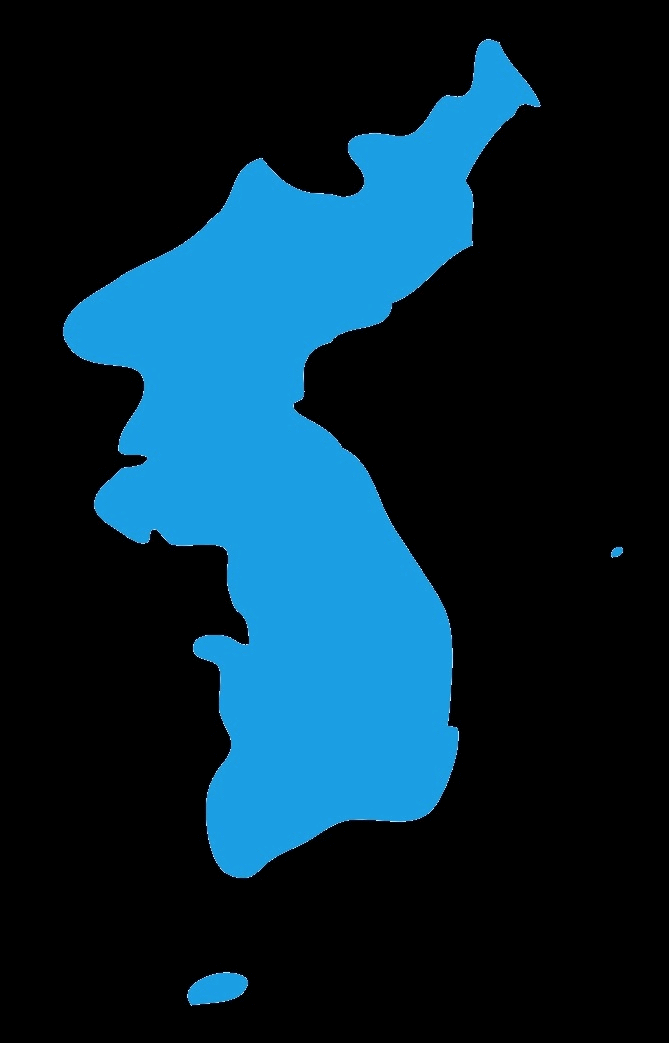Korean culture dates back more than 5,000 years. The culture's borders have moved around from place to place over the millennia and included Manchuria, which is now a part of China. From 1910 CE to 1945 CE, the peninsula was colonized by Japan. Today, the Korean Pensinsula is divided into two distinctly different nations: North Korea and South Korea.
South Korean Flag
(tae-geuk-gee)
Tri=-gram symbols have roots in ancient Chinese culture and are related to each other. All tri-grams are composed of opposites: masculine—feminine, yes—no, heavan—earth…. The meaning of the yinyang pairs is determined by the context. The Yin–Yang in the center of the flag symbolizes the harmony of opposites.

An interesting feature of the Chinese Taoists' Yin–Yang is the placement of small dots within the larger fields. These dots portray the idea that nothing is perfect: a little truth exists in deception and a little deception lerks in the truth.
The figure on the left displays the four tri-grams that appear on the modern South Korean flag. In ancient Chinese culture, one interpretation, among many interpretations of the tri-grams, represented different members of a family, i.e. "youngest daughter", "oldest son", "mother", and "father". Numerous other meanings can be inferred from the tri-grams. The curved black-and-white boundary suggests harmony, rather than confrontation.

The Choseon flag that waved in the early 19th century displayed eight tri-grams based on the eight possible permutations of the masculine–feminine "binary" symbols. (Source of graphic: Wikipedia)
Before the year 1910, there were eight tri-grams on the Korean flag. The tri-grams are from an ancient Chinese book called the “Yi Jing”, which in English is known as the Book of Changes; we might also say, the King's (Yi) Book of Changes. Although the Yi Jing first appeared in the year 282 CE, the earliest version available today is dated 1601 CE.
North Korean Flag
Looking at the flag of North Korea immediately reveals a noticeable difference in symbols between the flags of the North and of the South. The South’s flag is replete with cultural symbols having ancient Chinese origins, while the North’s flag displays symbols that are more general in their meaning:
The red stripe represents revolutionary tradition; the white bands stand for purity, strength, and dignity; the two blue stripes represent sovereignty, peace, and friendship; a prominent red star on a white field, represents Socialism.
Is that Corea or Korea?
According to sources, Portuguese sailors referred to Korea as "Couray" and by the Italians as "Cauli" since the late 16th century. In the mid 17th century, Dutch traders recorded the name "Corea".
The leap from C to K could have occurred because the sound of Hangeul (Korean writing) letter (kee-yuhk), is somewhere between English G and K; however, when
(kee-yuhk), is somewhere between English G and K; however, when is the first letter of a Korean word, the sound often resembles English K; thus, confusion emerges in the use of different spellings of the same sound value. Another consideration reveals that the sound of kee-yuhk does not exist in English. Thus, Corea may be a preferred spelling for Latin languages, i.e. Portuguese or Italian, while Korea may be a preferred spelling for Germanic languages, i.e. English and Dutch.
is the first letter of a Korean word, the sound often resembles English K; thus, confusion emerges in the use of different spellings of the same sound value. Another consideration reveals that the sound of kee-yuhk does not exist in English. Thus, Corea may be a preferred spelling for Latin languages, i.e. Portuguese or Italian, while Korea may be a preferred spelling for Germanic languages, i.e. English and Dutch.





 is the first letter of a Korean word, the sound often resembles English
is the first letter of a Korean word, the sound often resembles English